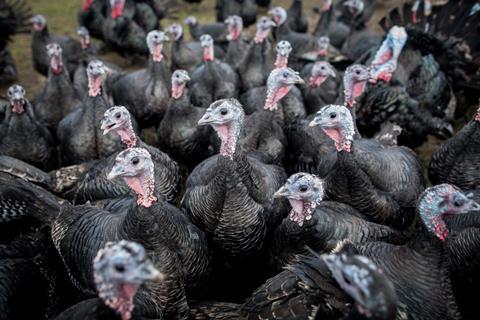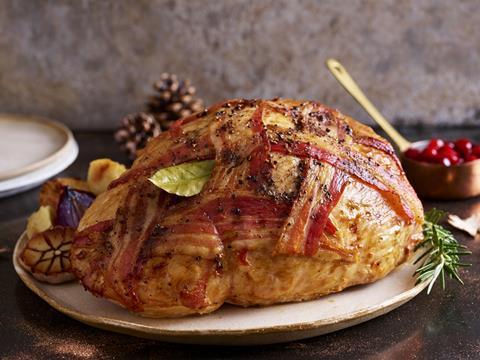Bird flu risk low for festive turkeys as suppliers continue pivot to crowns

Turkey producers are cautiously optimistic over the category’s prospects this Christmas, with supplies expected to be stable amid a current low risk from avian flu.
Defra’s most recent turkey slaughtering data for May shows placings for turkey poults were down 11% year on year at 0.6 million birds.
However, turkey slaughterings were up 4.3% at 0.5 million birds year on year – pointing to moves by processors to even out supply across the year and avoid the traditional festive increase in supply activity to a certain extent, suggested Paul Kelly, MD of independent supplier Kelly Turkeys.
This narrative was also reflected in a 38% year-on-year increase in slaughterings in April, an 8.8% increase in March and a 19% increase in February, according to Defra’s data.
“Placements are generally 20 weeks ahead of slaughtering, so there are a lot of people making crowns earlier on in the year, rather than in the run-up to Christmas,” Kelly explained.
The scenario was also feeding into continuing strong demand for products such as turkey mince and turkey breasts throughout the year, which were seeing strong penetration year-round, despite being more expensive than chicken.

“Turkey mince is incredibly healthy compared to beef mince, so it’s a great healthy alternative,” Kelly said.
The move to supply fewer whole birds and more crowns and added value slow-cooked turkey products, particularly in the major supermarkets in the run-up to Christmas, also reflected the challenges posed by avian flu in recent years, Kelly added.
“These could be cooked throughout the year and frozen, before being defrosted ahead of Christmas. It effectively derisks Christmas for suppliers and retailers and makes up about a quarter of the trade now,” he said.
“I understand why they do it, but as a passionate turkey producer, I think it dumbs down Christmas a little bit. I’m not sure it makes sense from an eating quality point of view – it takes away that wonderful theatre of cooking the fresh turkey at Christmas too,” he added.
“Whatever we cut off the turkey we add onto the price of the breast and crown, so for the consumer, if they bought the whole bird, they’d be getting way better value.”
Kelly also suggested not enough support was given by independent butchers to UK turkey producers in the run-up to Christmas, with many resorting to cheaper imports from Italy and Poland, unlike the mults.
But when it came to bird flu, the sector was expecting far fewer issues than they were two years ago – when the disease wrought a heavy toll on turkey supplies and drove prices up significantly for fresh turkeys.
“We didn’t see avian flu rear its ugly head to the same extent last year and it’s not about this year. The turkeys are there on farms, they’ve all been ordered by customers so it looks like a pretty normal Christmas at the moment,” Kelly said.
“There is plenty of time for that to change of course, but we’re not seeing birds die like they were – that’s a great indication that there’s an immunity in the wild bird population, which all means there won’t be as much a risk to the domestic bird population.”
Leave a Reply Cancel reply
- Trending
- Comments
- Latest
Citibank customers report fraud alerts and account access issues
Stocks making the biggest moves midday: IONQ, WFC, BK
TTMiles
Travel with me and experience each trip as a magical chapter in my travelogues. Come along with me as we discover the marvels of the globe one engrossing tale at a time.
Read more
Categories
Recent News
© 2024 Trilliontravelmiles - The one stope travel news site by Trilliontravelmiles.















































